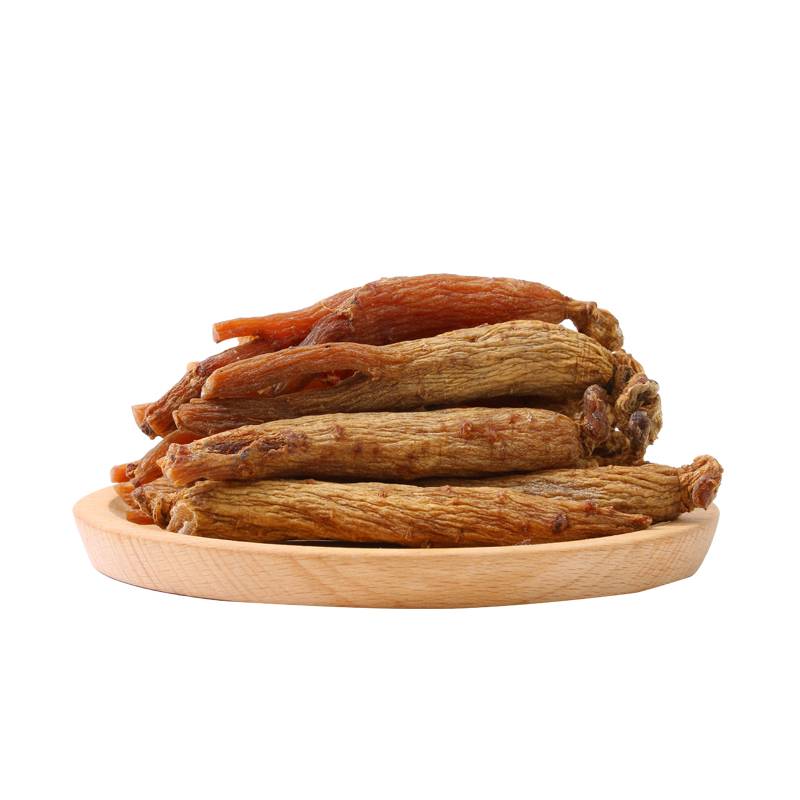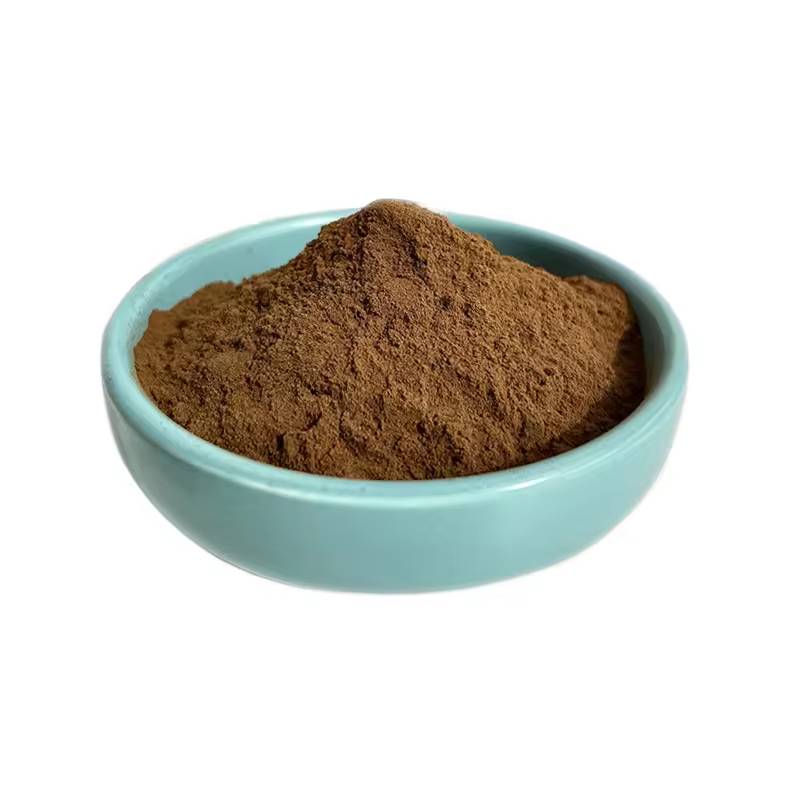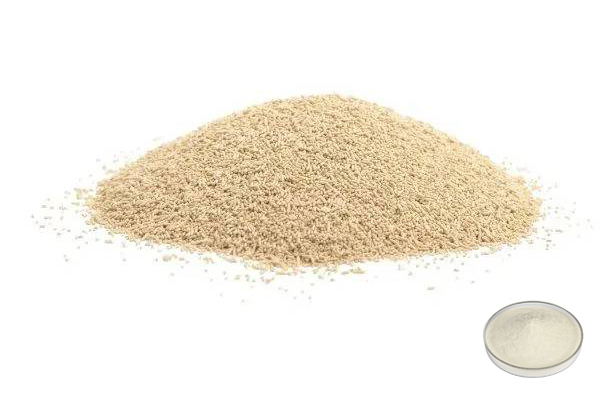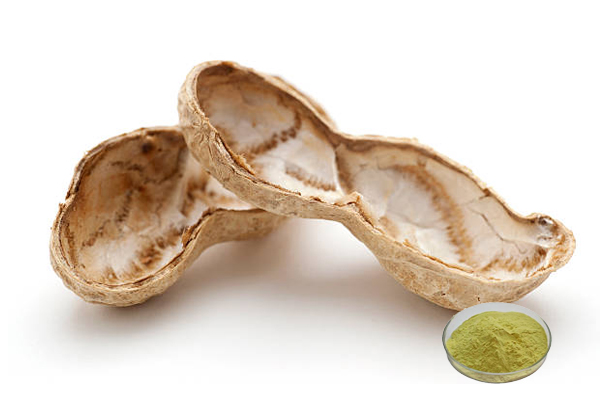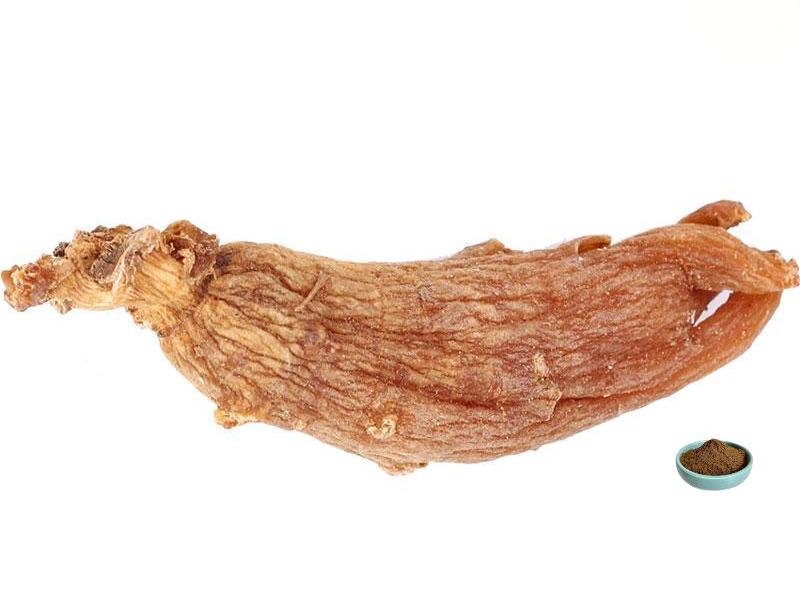Red Ginseng Extract 30:1
Latin Name:Panax Ginseng C.A.Mey.
Source:Red Ginseng Root
Specification:30:1
Testing Method:TLC
Appearance:Brown Powder
Pesticide Residue:Comply with (EC) No 396/2005 Standard
- Description
- Data Sheet
- Certificate
-
What is Red Ginseng Extract?
Red ginseng is ginseng steamed at 90℃ or above and then dried, repeatedly through three steams and three suns, finally get the red ginseng. During the production process of red ginseng, the content of Panax ginseng is reduced and some new physiological functionally active substances are synthesized to make it safer and more efficient.
Red ginseng extract is the effective active substances obtained from the root of red ginseng through extraction and purification, such as ginsenosides, red ginseng polysaccharides, volatile oils, arginine disaccharide glycosides, maltol, and so on. It has various effects such as anticancer, antioxidant, anti-inflammatory, and delayed aging.
Green Spring Technology supplies Red Ginseng Extract with stable performance, uniform and fine powder, solvent residues, heavy metals, and microorganisms under EU EC396, EU 2023/915, and the highest solvent residue standards.
Established in 2000, Green Spring is committed to providing customers with natural, safe, and organic plant extracts. Green Spring has established a perfect traceability system for all its products. The products all implement the highest international industry standards, and production is organized according to ISO, HACCP, and other quality standards. Green Spring has obtained many certifications such as Halal, Kosher, COSMOS, BRC, IFS, FDA, ISO9001, ISO22000, etc.
Specification:
Product Name
Red Ginseng Extract
Latin Name
Panax Ginseng C.A.Mey.
Source
Red Ginseng Root
Specification
30:1
Testing Method
TLC
Appearance
Brown Powder
Pesticide Residue
Comply with (EC) No 396/2005 Standard
Regulation:
It conforms to EU regulations.
Looking for a Quotation?Benefits:
Anti-inflammatory
Red ginseng extract can reduce the number of ovalbumin-induced inflammatory cells in bronchoalveolar lavage fluid of asthmatic mice, indicating that red ginseng can effectively inhibit inflammatory responses by suppressing the production of reactive oxygen species. Red ginseng extract can inhibit the secretion of pro-inflammatory factors by interrupting the signaling pathways such as MAPK and NF-κB. Red ginseng has been used less in inflammation, and all of the above studies provide evidence for the use of red ginseng in anti-inflammation.
Antioxidant, Delaying Aging
Ginsenosides, polysaccharides, arginine disaccharides, maltol, and other active ingredients in red ginseng can inhibit free radicals in the body and prevent excessive oxidation. Studies have shown that red ginseng polysaccharides can reduce the level of malondialdehyde (MDA) in the serum of mice and enhance the activities of superoxide dismutase (SOD) and glutathione peroxidase (GSH-Px). It showed good in vivo antioxidant activity. Red ginseng has a unique effect on cosmetic anti-wrinkle and delayed aging. Ginsenoside Rb1 can effectively protect skin cells exposed to fine particulate matter (PM2.5), thereby reducing damage to skin keratin-forming cells and normal dermal fibroblasts.
Liu et al. found that compound K, a metabolite of ginsenoside Rc, could counteract UV-induced damage to human skin fibroblasts, attenuate UV-induced photoaging, increase skin elasticity, and prevent excessive pigmentation. Hou et al. found that red ginseng could prolong the lifespan of Drosophila melanogaster, and play a role in the delayed aging of human skin by preventing the degeneration of the thymus gland and by regulating the expression of aging-associated genes and subpopulations of immune cells. The effect of red ginseng on the aging process In general, red ginseng extract and its active ingredients mainly scavenge free radicals to achieve antioxidant and ageing-delaying effects.
Anti-allergy
Red ginseng extract alleviates the symptoms of allergic diseases mainly by modulating innate and adaptive immune cells. It has been found that red ginseng can inhibit the expression of interleukin (IL)-4, IL-5, and immunoglobulin E (IgE) by regulating the activation of mast cells, basophils, and eosinophils, thus alleviating the clinical symptoms of allergic rhinitis, asthma and pruritus. The main active ingredients in red ginseng extract that play an anti-allergic role are ginsenosides and ginseng polysaccharides. Ginsenoside Rh2 attenuates allergic airway inflammation in ovalbumin-sensitised mice by regulating nuclear factor-κB (NF-κB) activation and p38-mitogen-activated protein kinase (MAPK) phosphorylation. Most of the studies of red ginseng on allergic diseases remain at the animal experiment stage.
Antidiabetic
Red ginseng extract and its main active ingredient ginsenosides have anti-diabetic effects. Yu Lei et al. found that red ginseng polysaccharides significantly reduced blood glucose, total cholesterol, triacylglycerol, and LDL levels in diabetic mice. Hong et al. demonstrated that red ginseng prevented streptozotocin (STZ)-induced destruction of pancreatic tissues and restored insulin secretion, ameliorated type 1 diabetes mellitus, and restored the immune cell compartment. Red ginseng extract modified by pectin cleavage enzyme (GS-E3D) ameliorated obesity-related glucose tolerance abnormalities by increasing insulin sensitivity in epididymal adipose tissue.
Applications:
For Healthcare Products:
The role of red ginseng extract in health care products mainly focuses on fatigue relief, immunity enhancement, antioxidants, etc. Jung et al. studied milk with red ginseng extract and found that red ginseng promotes an increase in lactose and total solids content of milk, while fat and protein content remains unchanged, and that milk added with red ginseng has enhanced antioxidant properties, which can be used as a functional food.
In Cosmetics:
The unique effect and safety performance of red ginseng extract in whitening and anti-wrinkle, delaying aging and hair care have made it increasingly become one of the most widely used cosmetic ingredients. Ginsenoside is the most important active ingredient in red ginseng with cosmetic and skin care effects. Compound K, a metabolite of ginsenoside Rb1, has moisturizing and aging-delaying effects, and cosmetic products with compound K can protect the skin from ultraviolet rays and increase the water content. The potential of red ginseng as a cosmeceutical is further confirmed by the fact that red ginseng extract can inhibit the activities of tyrosinase and elastase.
-
Download
Red Ginseng Extract COA


 English
English French
French Spanish
Spanish Russian
Russian Korean
Korean Japanese
Japanese



